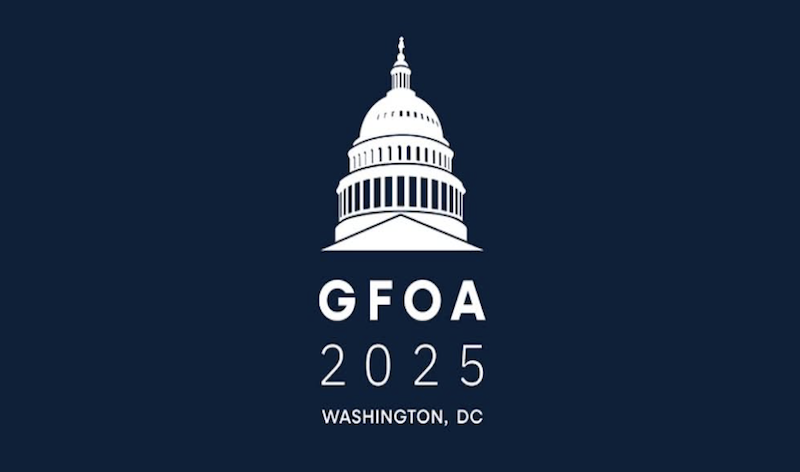Contents
The 119th Annual Government Finance Officers Association (GFOA) Conference made one thing clear: local governments are ready to rethink how they plan, budget, and communicate impact. From program budgeting, to capital investments to long-range financial strategy, public sector leaders shared a collective urgency to innovate and modernize.
With many government agencies facing fiscal challenges, uncertainty, and a decline in public trust, there has never been a more important time to look beyond what has gone before and rethink many aspects of public finance.
At Envisio, we were grateful to take part in these conversations, alongside our technology partners, local government customers, and other forward-thinking public sector finance leaders.
Here are our top three takeaways from this year’s GFOA conference.
1. Local leaders are embracing modernized budgeting frameworks
One standout session featured local government finance leaders sharing their real-world journeys toward program-based, transparent and data-informed budgeting.
Moderator:
- Rebekah Lankford, University of Georgia
Panelists:
- Jill Johnson, City of Casper, WY
- Glenda Bradley, Orange County, VA
- Ashley Jacobs, Orange County, VA
-
Deanna Lundahl, Rock Hill, SC
Each panelist offered a unique look at how their organizations are using modern budgeting practices (like priority-based budgeting, program costing, and performance tracking) to better align dollars with outcomes.
Local governments like Orange County, VA, the City of Rock Hill, SC, and the City of Casper, WY shared how they’re reimagining the budget process with a focus on programs, not just line items.
In Orange County:
- County leadership created a Management Analyst role to support performance-based budgeting.
- Enrolled staff in GFOA’s program budgeting training to build internal knowledge.
-
Integrated performance reporting into their financial systems and strategic priorities.
In Rock Hill:
- Adopted a hybrid approach that ties budget requests to 3-year strategic targets.
- Uses internal dashboards to track performance metrics and support budget decisions.
-
Aligns cost centers with tangible, resident-facing outcomes.
In Casper:
Casper launched a two-year pilot to implement priority-based budgeting with our friends at Tyler Technologies. The city wanted to address the challenges they were facing using a traditional incremental budgeting, which made it difficult to justify costs or measure impact.
With the help of a priority based budgeting approach, today they are:
- Developing a program inventory with cost allocations
- Scoring programs against council-defined priorities
-
Using performance data to inform funding decisions
2. Rethinking Budgeting is gaining ground—but there’s still work to do
At the heart of the conference was the ongoing conversation around implementing the principles encapsulated in the Rethinking Budgeting operating system.
The Rethinking Budgeting recommendations call for moving away from rigid, incremental budgeting and toward budgeting that is strategic, participatory, agile, and outcomes-oriented.
National Survey Results
A national survey by GFOA and Polco in early 2025 shows that momentum toward adopting these principles is growing. The results reveal a promising landscape, but with some notable and persistent gaps:
-
Over 50% of respondents had implemented significant changes to their budget process in the past two years—up from just one-third in 2023
-
Satisfaction with internal processes is high but there are areas of the budget process that the survey revealed are lagging behind in terms of reform. These are around resident engagement, creating a budget focused on performance and outcomes, and a lack of systems to track progress and results.
- Fewer than 60% of respondents said that outcomes and performance metrics meaningfully guided their budget decisions. This aligns with what we’ve seen at Envisio while facilitating GFOA Readiness Assessments for cities across the country. Frequently, one theme rises to the top: the need to build a budget process centered on measurable outcomes. Organizations are also prioritizing stronger resident engagement, and ensuring that budgets are tightly aligned with strategic priorities.
This “aspiration vs. reality” gap underscores the need for integrated systems that connect planning, budgeting, and performance, and more cross-sector communities of practice to share real-world stories of implementation and success.
You can read more about our Rethinking Budgeting Trailblazers group in the April edition of Government Finance Review (GFR) and hear more about our work to support local governments in their budgeting transformation journey in our 2 minute video:
3. Capital planning must be strategic and transparent
Another key theme this year was the rising importance of capital planning as a strategic discipline. Panelists and presenters highlighted how thoughtful capital investments—when connected to long-term goals—can not only drive infrastructure improvements, but also financial sustainability and public trust.
This is one of the reasons why Envisio has introduced our Projects solution. We understand that capital projects and planning require:
- Strategic alignment: Capital projects need to be tied to measurable goals and tracked within the broader strategic plan.
- Financial alignment: Budgets, funding sources, and operating impacts should be mapped to each capital initiative.
- Progress tracking: Dashboards should highlight timelines, milestones, and KPIs.
-
Transparency: Dashboards and board reports that make project updates understandable and engaging for both elected officials and residents.
Looking Ahead
From national survey data to local case studies, this year’s GFOA Conference made it clear: the foundations of public budgeting are shifting. Agencies across the country are moving toward budgeting that is more strategic, more transparent, and more results-driven.
And Envisio is proud to be part of that shift; helping governments plan for the future, and deliver on their promises.




